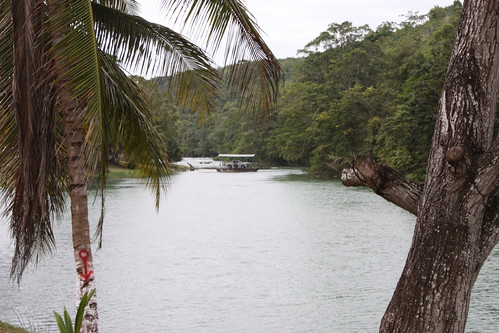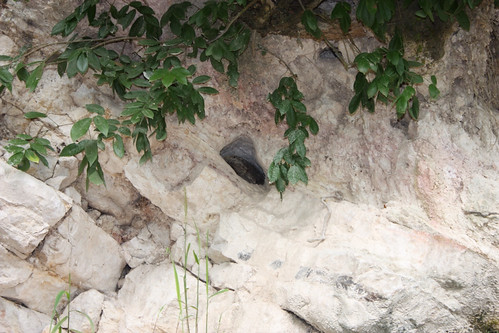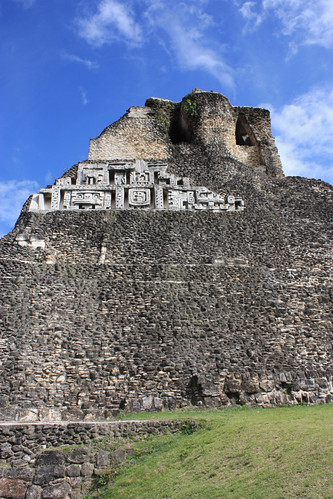To reach Xuantunich, you need to cross a small river, which is facilitated by a small one-car ferry that is powered by... wait for it... a hand-crank. The guy with the burliest fore-arms in the Belize Civil Service literally cranks a wheel connected to a cable and drags you and your car across the sleepy river.
A mile up the hill from the ferry, past the iguanas guarding the limestone walls, you happen upon a site of various excavated ruins of a City that supported probably up to 10,000 people during the rise and fall of the Mayan Empire, between about 200 BC and 1000 AD.
A series of temple-like structures are found, all built without the benefit of metal tools or beasts of burden. the local rock is almost all limestone, so this served as the primary building material, and with lots of trees to burn, the Mayans learned to slake lime and make a cement mortar to hold the rough- hewn limestone blocks together. the basic technique was to pile flattish rocks up, then use block-cut stones around the outside for support and to provide the aesthetic facia.
Some ornately carved facia - frieze - were excavated on this site, and although the originals were removed and kept for protection in a museum, replicas were installed where the originals were discovered back in the mid-20th Century, after about 1000 years of being buried in the jungle.
The Maya actually went into sharp decline about the time these that the largest structures at Xuantunich were being built. There was no major disaster, disease, war or anything that coincides with the decline, it is speculated that it was a general resource decline. Essentially, they were so good at extracting resources that they stripped the livability out of the surrounding countryside then suffered a population drop that prevented them from continuing to live int he same society as they had built.
The Maya were around when Cortez arrived, and their defendants survive today, but the Classical Mayan society had been gone for 500 years. The temples may have had something to do with it, because in a late stone age culture that built temples to the Gods to thank them for resources, the only logical response to resource loss is to build better temples. Fans of Jared Diamond know this story well, but fellow Lower Mainalnd blogger Stephen Rees wrote a cool piece about this recently. The parallels with modern society are pretty speculative, but interesting to consider.







No comments:
Post a Comment